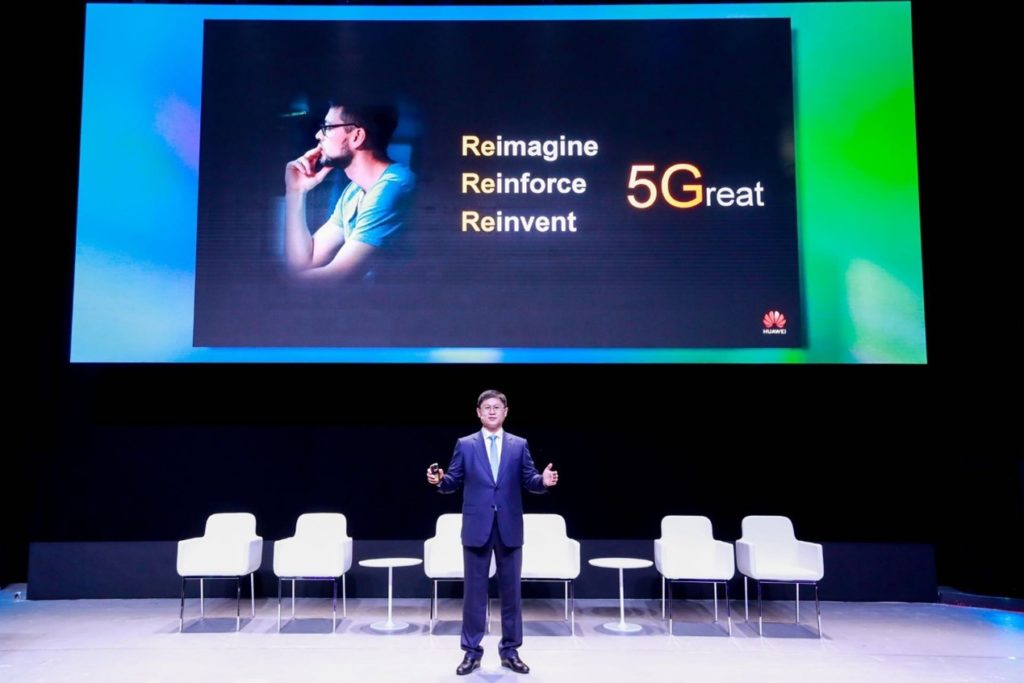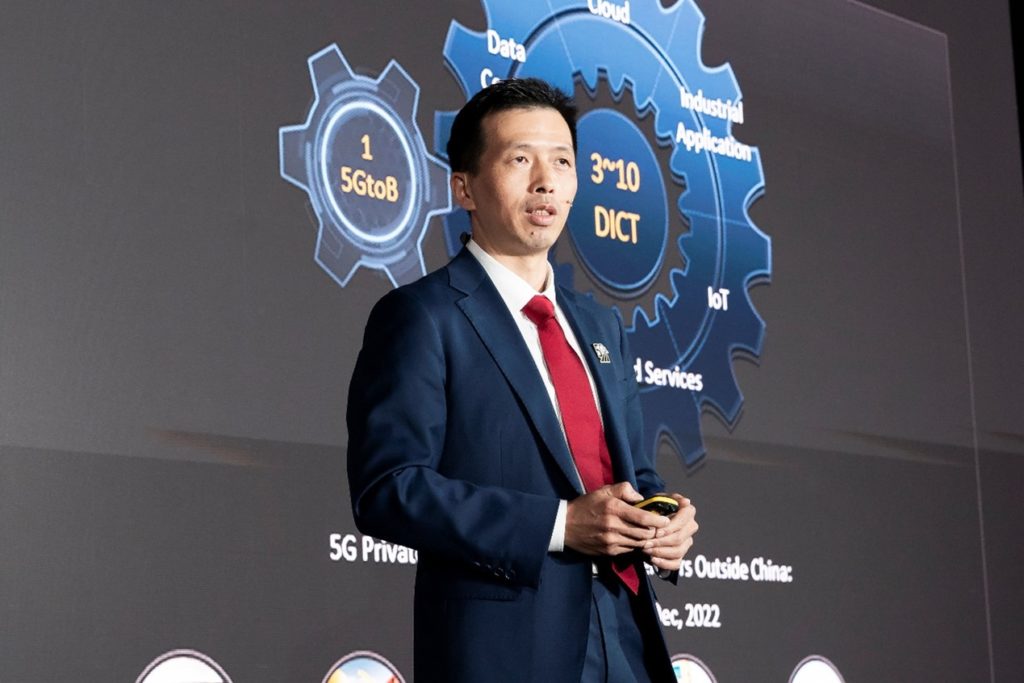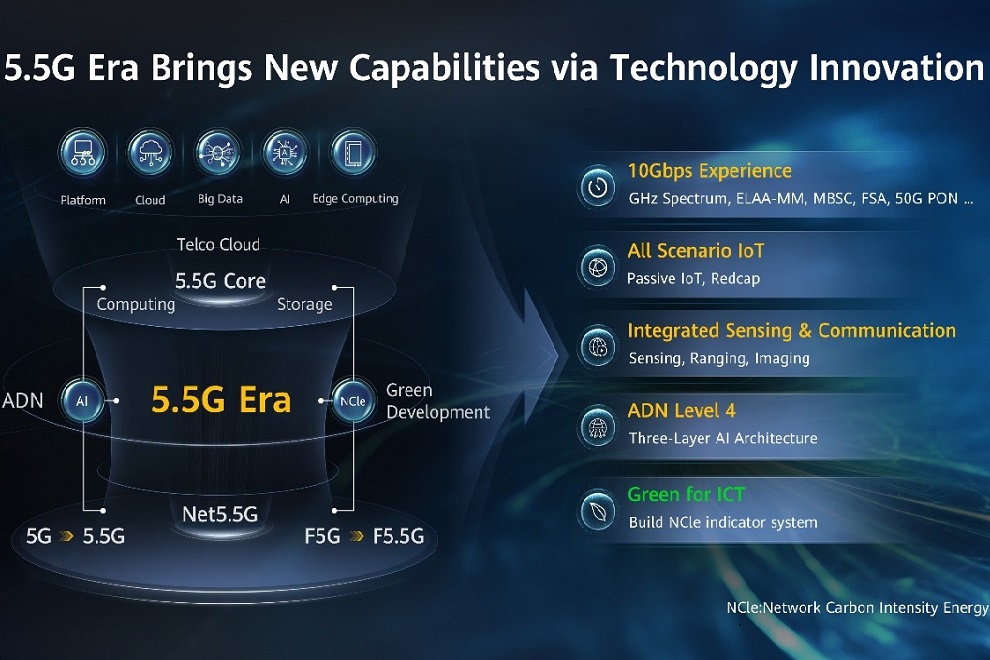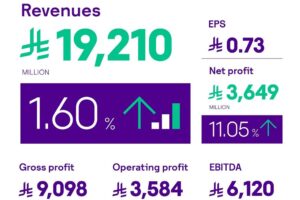At MWC Barcelona 2023, Huawei showcases leading technologies, new business opportunities, and industry progress in the 5.5G era. The company aims to work with carriers and industry partners around the world to further the evolution of ICT infrastructure, lay the foundation for the 5.5G era, and build on the success of 5G for even greater prosperity.
At the event, Huawei presents five major characteristics of the 5.5G era: 10 Gbit/s experience, all-scenario IoT, integrated sensing and communication, Level 4 autonomous driving network, and green ICT.
Technological innovation in the 5.5G era will bring operators a 10-fold increase in network performance over 5G in terms of speeds, connections, accuracy and reliability, efficiency, and intelligence. 5.5G can help operators open up five new business frontiers and drive a 100-fold increase in new business opportunities.

At the event, Huawei Carrier BG President Li Peng, delivered a keynote speech on reimagining 5G business, reinforcing 5G coverage, and reinventing 5G technologies. In his speech, Li shared insights into user experience and recent 5G development. He said that the industry must work together to accelerate 5G prosperity.
He stated that 5G has developed rapidly since it entered commercial use three years ago. By the end of 2022, over 1 billion 5G users had watched high-definition streams of major international sports events, and more than 10 million households had access to 5G broadband. As 5G network capabilities improve, users are able to watch videos in higher definition and from more viewpoints, creating a new standard for next-generation experiences. 70% of users are already willing to pay for better 5G experiences.
Li also highlighted that deeper 5G coverage is helping carriers better monetize experience. This is well evidenced by the world’s top 20 carriers in 5G network rollout, who achieved significantly higher ARPU and revenue growth than the global average last year. Innovation in 5G base station equipment would also be required to provide deeper coverage. Along this line, in 2022, Huawei launched MetaAAU, its third-generation AAU for 5G base stations. Compared with its previous generation counterpart, MetaAAU offers about 30% higher capacity and coverage, making it a prime choice for carriers pursuing deeper 5G coverage.

Huawei has also convened the 5G Business Success Summit at MWC. Peng Song, President of Huawei’s ICT Strategy & Marketing, delivered a keynote speech titled “Diverse Paths to 5G Monetization, Accelerating 5G Business Success”. In his speech, he noted that the achievements made by 5G in its first three years are equivalent to those that 4G made in its first five years, and that leading operators are already celebrating the success of the first round of 5G development, which has instilled a sense of certainty and confidence in the industry. 5G will thus sustain this success if its value can be further unleashed in ToC, ToH, and ToB sectors.
During his speech, Mr. Peng noted that the global user penetration rate of 5G in its first three years amounts to that of 4G in its first five years. Operators reporting over 20% 5G user penetration during the first round of deployment have seen significant growth in mobile revenue. In the meantime, devices, content, experience, and business models are diversifying as more operators and partners embrace 5G. This is evidence of a market shift from risk-based to revenue-based decision-making for even more assurance of business success.
Frontier 1: Explosion in services with immersive and interactive experiences
3D applications, such as 3D online malls, 24K VR gaming, and glasses-free 3D video, will become mainstream. Services with immersive experiences emerged in the 5G era, but in the 5.5G era, services with both immersive and interactive experiences will become commonplace. With continuous breakthroughs in device technologies and a boom in content, the number of online users of immersive and interactive services in the 5.5G era is expected to exceed 1 billion, a 100-fold increase.
Frontier 2: Further enabling industry digitalization
As 5G private networks become increasingly capable, their scope of application will expand by 10 times, and the value of each connection in key applications will increase by even more than that. We predict that the number of 5G private networks deployed will increase from 10,000 today to 1 million by 2030. Fiber connections are extending from homes and enterprises to production lines and even production equipment.
Frontier 3: Cloud applications entering a new era, creating new opportunities for network connectivity
Cloud-based and multi-cloud enterprise applications are becoming a new trend. The cloud applications will need real-time, reliable, and easily-accessable connectivity, bringing new opportunities to transmission networks, whether they are between edge cloud nodes, between edge cloud nodes and central clouds, or between enterprises and the cloud.
Frontier 4: Cellular networks cover all IoT applications and passive IoT enables 100 billion connections
Passive IoT technology is extending mobile connectivity from high-speed active solutions to ultra-low-speed passive ones. Passive IoT tags can transmit data, and can also be used for positioning and on temperature sensors. Such tags can be used in a wide variety of scenarios, such as automated inventory of warehouse items, agriculture and livestock development, and positioning of personal items. Currently, more than 30 billion passive IoT tags (based on technologies like RFID) are consumed a year. As more industries go digital, the number of passive IoT tags used every year is expected to reach 100 billion.
Frontier 5: From communication to integrated sensing and communication, facilitating new services
5.5G networks with the sensing capability can be used extensively in scenarios like smart city road traffic services and perimeter sensing, making urban infrastructure more efficient and intelligent. For example, in rainy or foggy weather, 5.5G networks can automatically detect obstacles or abnormalities on the road and notify drivers through the maps in their cars one kilometer in advance, making transportation safer. MWC Barcelona 2023 runs from February 27 to March 2 in Barcelona, Spain. Huawei showcases its products and solutions at stand 1H50 in Fira Gran Via Hall 1. Together with global operators, industry professionals, and opinion leaders, we dive into topics such as 5G business success, 5.5G opportunities, green development, digital transformation, and our vision of using the GUIDE business blueprint to lay the foundation for 5.5G and build on the success of 5G for even greater prosperity.












